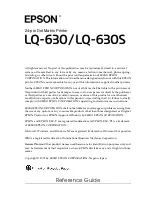
12 Materials
Materials in this chapter are sorted from the most to the least commonly used. If you’re new
to 3D printing, your first filament should definitely be PLA. Only when you are limited by
some of PLA’s disadvantages, it’s time to try other filaments like PETG or ASA. Other
materials listed here are very specific to a particular application.
You can find a comprehensive filament guide at
. It
contains a table describing all sorts of supported filaments, divided both by material
and specific manufacturers. You can compare their parameters starting with
physical properties and ending with their prices. Filaments can be sorted and filtered by their
parameters and intended use.
12.1 PLA
PLA is the most commonly used material for 3D printing. It is
biodegradable
,
easy to print
with
, and PLA prints are
very hard
. The perfect choice for printing large objects due to low
thermal expansion (prints do not warp on the heatbed) and for printing small detailed
models.
It is the only material that is well suited for printing 50 micron layers
(Ultradetail resolution).
Advantages
Disadvantages
Easy to print
Brittle
Detailed prints of small models
Low-temperature resistance (60 °C)
Trouble-free printing of large objects
Difficult to post-process
Hard, low flexibility
Not suitable for outdoor use
Almost odorless
Affordable
Wide color selection
Typical use
● prototypes
● toys
● figures
● jewelry (tiny and detailed models)
● architecture models
Tips and tricks
When post-processing PLA, it’s better to use wet sanding. Without water you'll quickly start
heating the plastic by friction, it will melt locally and make it hard to keep sanding. PLA is
58
















































